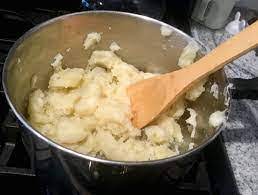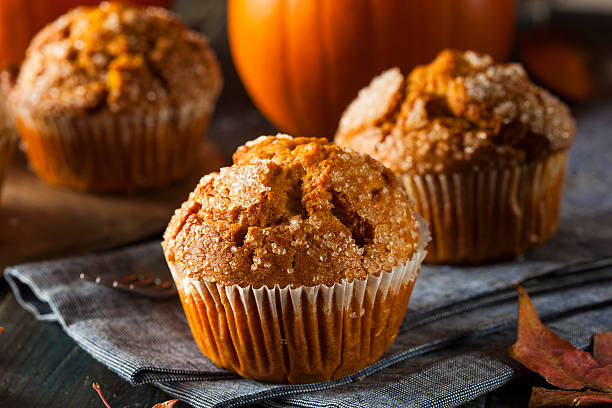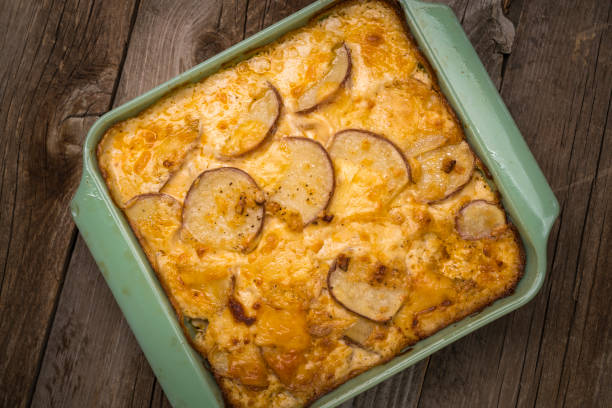Mashed potatoes are one of the most complex foods. Although the process of boiling, mashing and stirring seems simple enough, there are so many options — whether you leave the peel on or take it off, what dairy to use, how to mix the milk, and whether to use an electric mixer, potato ricer or hand mash. It could easily become a lengthy book to weigh all these possibilities.
The only thing mashed potatoes can be steeped in more than butter is tradition. You may be a fan of sour cream or a devotee to the altar of garlic, but you probably have a favourite recipe you love and would never make your potatoes another way. What if your basic cooking method could enhance the texture and taste of your potatoes or make them easier or quicker to cook?
This was the reason I wanted to research it. There are many ways to cook potatoes, including the instant pot and sous-vide machines that can be accessed via Bluetooth. I wanted to find out how the texture and flavour of the resulting mash were affected by this alone, with all other factors being equal (or as close as I could). These are the results that I created.
A few notes about methodology
Yukon Gold potatoes were my only choice for testing. They are buttery in flavour and have a lower starch content. Starch absorbs liquid. Boiling starchy potatoes can lead to a mash that has a weak flavour and a sticky texture. Yukon Golds are less likely to experience this problem.
Each section below shows the original method of cooking potatoes. I did not add any seasonings or ingredients. I used two tablespoons of butter and a quarter cup of whole milk to keep the potatoes from becoming too dry.
The times below don’t include potato cutting or peeling, but only the cooking and mashing of potatoes.
Slow cooker
Time: 3 hours, 35 mins
This method is simple and easy. This is how I did it: You need to add a cup of water, cut potatoes in a slow cooker and then do other things until your kitchen smells amazing.
Results
Although the recipe calls for cooking for four hours, mine took three-and-a-half hours on high. The bottom of my pan began to brown. Surprisingly this didn’t affect the flavour. It was more starch-forward than other methods and had less concentrated.
Method: Steam and riced
Time: 25 minutes
This method is fast and easy. I used Cook’s Illustrated as my guide. (It’s a PDF link). It’s important to cut the potatoes into small pieces and use a pot with a tight-fitting lid. This is a quick method; as with many Cook’s Illustrated dishes, it takes a few extra steps. After 10 minutes of steaming the potatoes, drain them and rinse under cold water to remove excess starch. Then, return the potatoes to the pot and steam them for 10 more minutes. It took slightly longer for the potatoes to cook through. Instead of hand mashing, I used an OXO potato ricer to prepare the potatoes. Then, I added milk, butter and salt.
Results
The texture was perfect. The texture was perfect, thanks to the ricer. However, the flavour was still missing. Even after adding seasonings, it tasted bland and uninteresting. I’d have liked more potato essence. It required more attention than other methods and was more likely to ruin some dishes.
Methode: Sous Vide
Time: 40 minutes
This method allows you to cook food in a sealed bag with controlled water temperatures. I used a JOULE sous vide, which sticks to your pot with magnets (or clips on either side) and allows you to control the water temperature using an app on your smartphone. I also used the app recipe for Pommes puree. The most exciting thing for me was cooking the potatoes in buttermilk instead of water.
Results
Sous vide is revered for its ability to cook meat at the right temperatures. Therefore, I was surprised that the potatoes took an extra five minutes to become tender. The bag’s contents were mashed, and I noticed a flavour concentration but not enough moisture. This can be corrected by increasing the amount of butter or milk. It’s also a great cleanup technique to mash all the contents in one bag. However, the only limitation of this method is the maximum quantity you can make at once.
Method with No-Boil
Time: 85+ Minutes
This method is great if you don’t have any ovens. Place whole potatoes on a baking sheet. Bake at 425°F for about one hour. Once the potatoes are cool, remove the jackets from the potatoes and mash. Baking reduces starch activation and lowers water content than boiling.
Results
Although these spuds had a stronger potato flavour than those baked, squeezing them out of their jackets wasn’t easy. It also left behind a lot more flesh. This technique is time-consuming and not my preferred one. However, it can be used as a backup if the oven is already on.
Method: Instant Pot
Time: 18 minutes (4 for pressurize, 8 for cook, 1 vent, 5 to mash).
About: Pressure cooking can be described as steaming with steroids. Pressure cooking works well for potatoes and any other food you would normally prepare in a “wet” way like boiling or poaching. Because I was confident it would work, I selected a highly-rated recipe from the Pressure Cook recipes specialty site. The recipe calls for one cup of water to be added to the pot. Next, place the steamer rack on the steamer rack and then add the quartered potatoes. You get super-supple potatoes because of the increased pressure.
Results
This was not only the fastest way to prepare potatoes for mashing but also gave me the softest and smoothest results. The potatoes were being transferred to another bowl to be mashed (which is completely optional, you can do it right in your cooking pot) when one of them fell to the ground. It was tender and mashed itself. This method can be used if you prefer a few lumps. However, an electric mixer will give you a texture almost like a puree. To get the extra flavour and texture, I would like to see a saute function added after the first cook.
Method: Boiled, Hand-Mashed
Time: 38 minutes
About: Cooking potatoes in boiling water until soft is the most common method. Two deviations from the traditional recipe, Serious Eats, were made in the recipe. First, I cut the potatoes into three-inch pieces. This was a task I gave up on because my potatoes were too small, and I didn’t want to boil them whole. The second method I adopted, and credit for the success of this technique, was to return the drained potatoes to the pot for another minute or so to remove excess moisture.
Results
The softened potatoes were scented like french fries when cooked. Some even got a little brown. This created a dry mash that had a slightly toasty flavour. This was my favourite accompaniment to butter and whole milk. Although there were some lumps from hand mashing, I prefer mine to be more texture- and body-based than sweet potato pie. The Instant Pot method is recommended if you like super-creamy potatoes.




